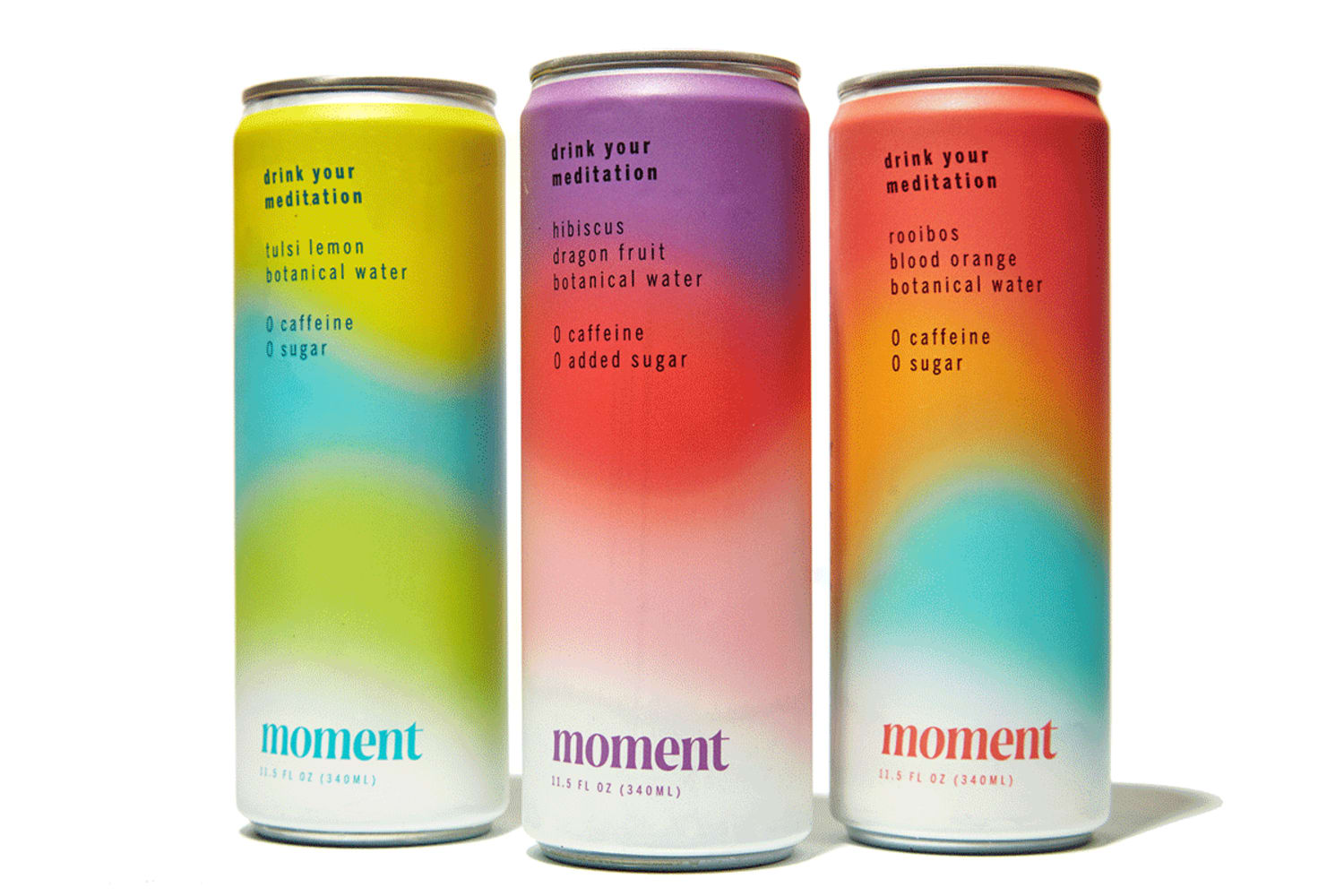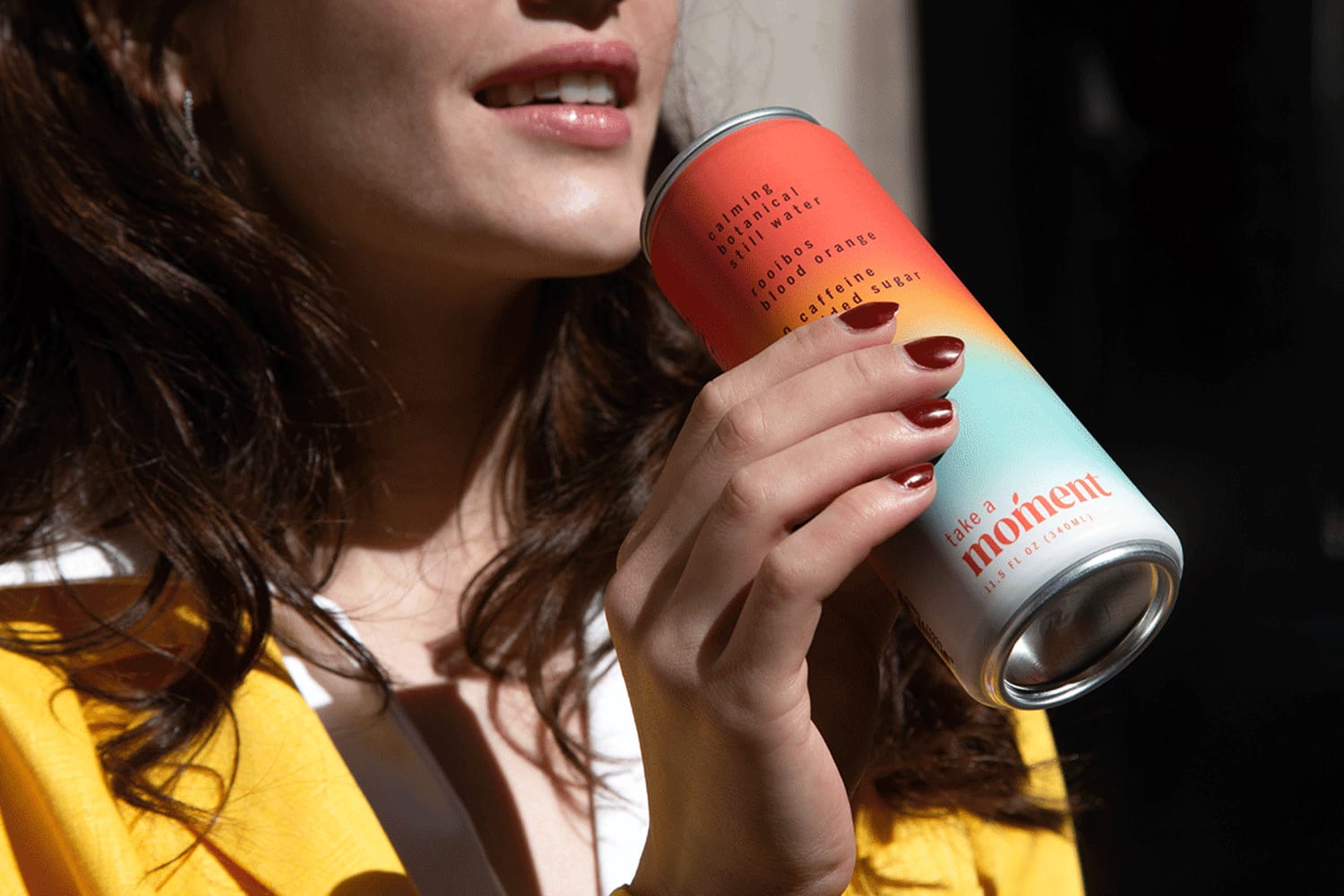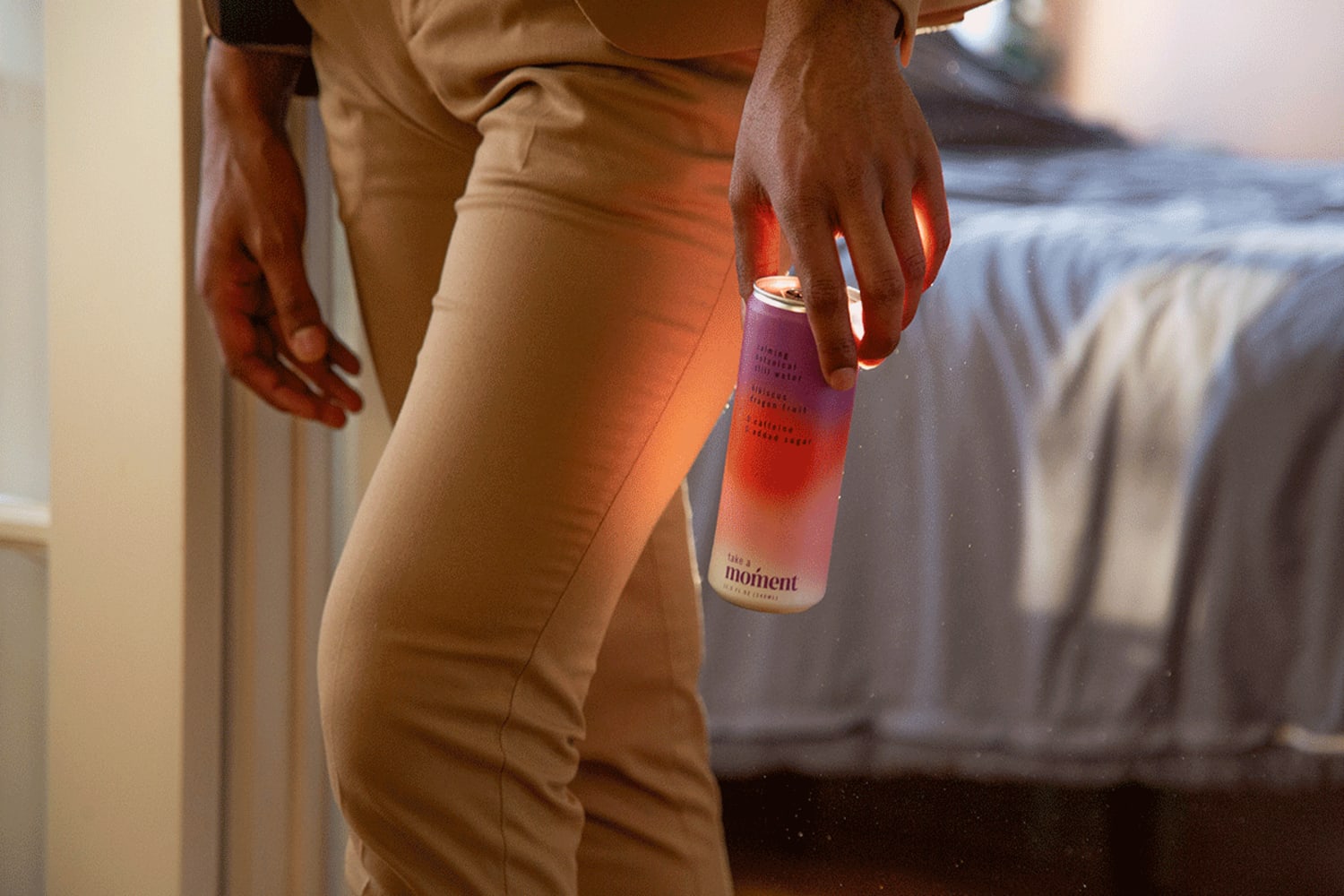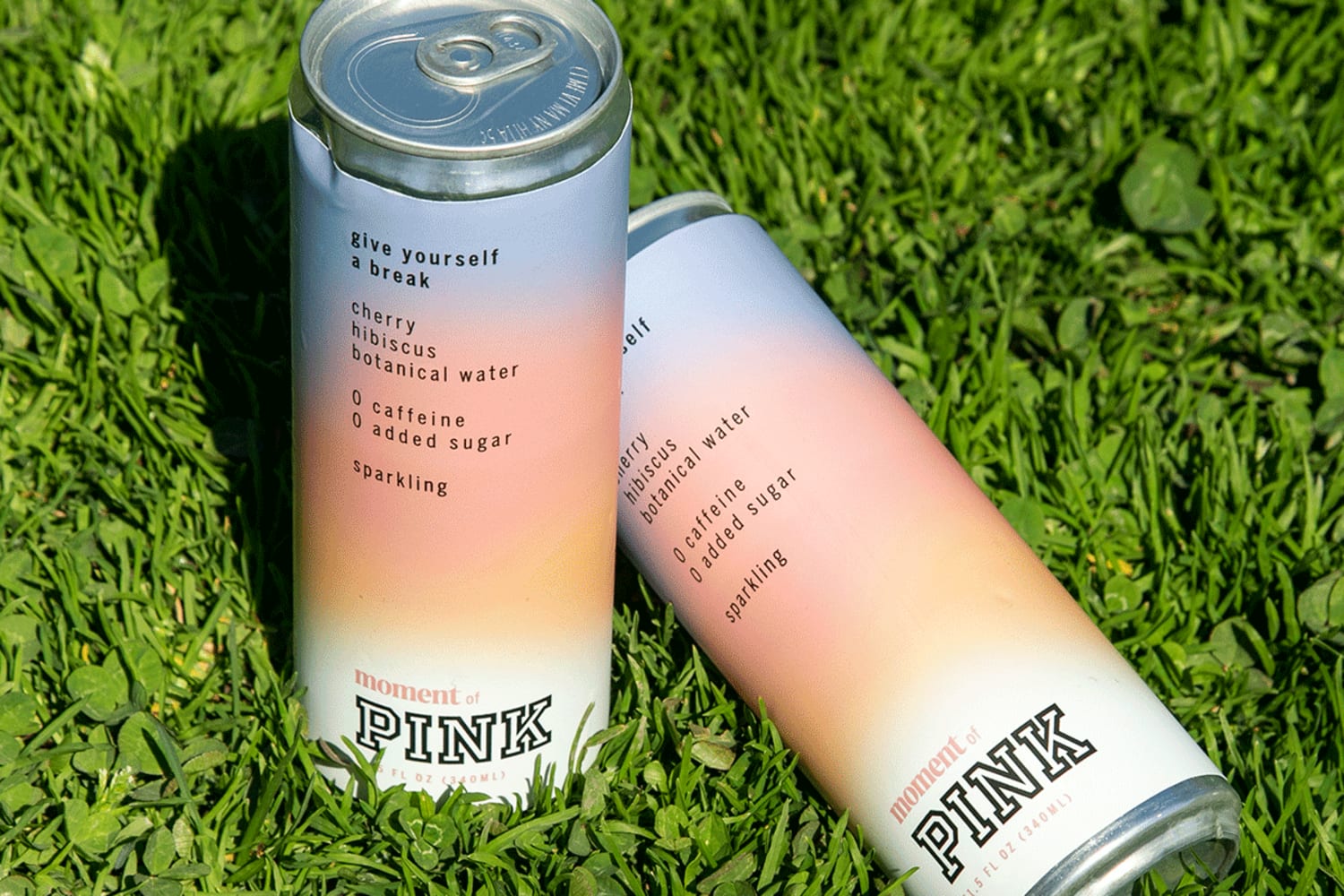How do you see Moment fitting into a broader mindfulness practice?
One aspect of Moment is the functional product, and then there’s another aspect, which is what it represents. For us, the concept of ‘taking a moment’ was to urge people to take a minute away from a busy day, and then be able to provide a product that allows you to relieve stress while you take that break. That’s why we chose the name ‘Moment.’ Everything that we’ve done in terms of the overall customer experience is to reinforce that—including the way the cans have been designed with these gentle fades and a soft tactility.
We also have an SMS-based meditation club. At 3pm every day you’ll get a little doodle, for example, or you can listen to the sound of the waves for a minute. It’s a fun, easy take on meditation, to let your mind relax and then you go back to whatever you’re doing. The idea is to build a bridge because sometimes people find it difficult to get into the habit of what we have traditionally called meditation.
You don’t just have to have the beverage. We’re trying to create a broader community around this idea of taking a couple of minutes away to rebalance yourself.
You describe Moment as a way to “drink your meditation.” What does that mean?
Our formulation activates the same brain waves that meditation does. If you meditate continuously for a couple of weeks, you’ll start to see that you’re much more creative, you can concentrate better, etc. The functional ingredients in Moment have a similar effect on your brain, which is why we have framed it as ‘drinking your meditation.’
It’s not to say you should stop meditating, or if you drink this you don’t need to meditate. [Moment] is a gateway into meditation and the effect it has on your body and your mind.
Why do you think Moment is the drink for our times?
It’s interesting, there are so many different evidence points that are coming up now because of everything that the world has gone through over the last year. But I recently read a study by Microsoft looking at the impact on your brain of back-to-back Zoom meetings. They actually studied the brains of people who are in back-to-back meetings, and they were in the red zone completely. When your brain is in the red zone, it’s always going to be panicked, it’s going to be frazzled, it just can’t perform well. Versus people who would take a couple of minutes away in between meetings—their brains were in the blue zone. [Ed note: the colors correspond to electrical activity in the brain measured using EEG and indicate stress level].
The world had to, unfortunately, go through a lot to realize how important it is to incorporate mindful practices into your day, every day, for long-term mental health.








